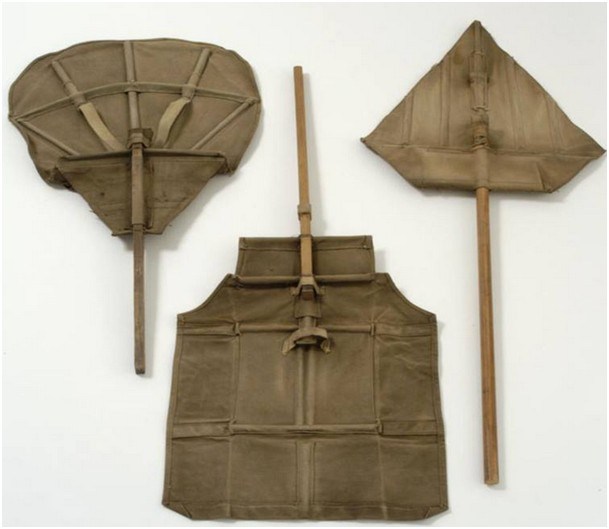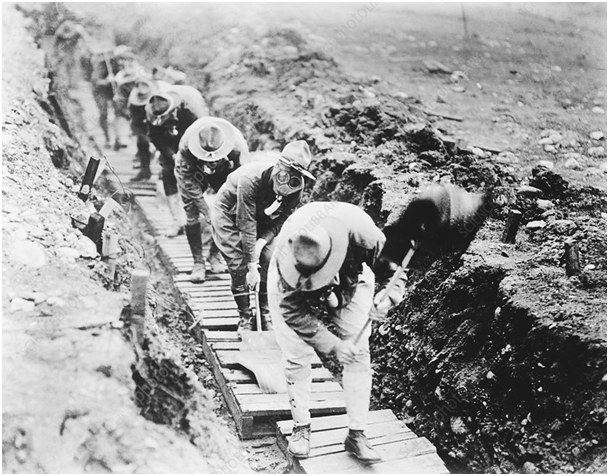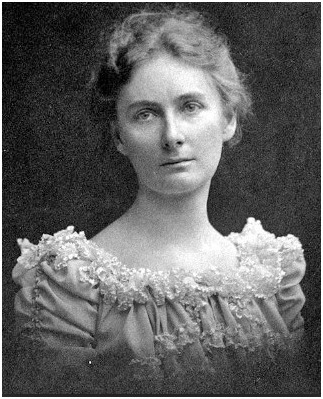The Ayrton “anti-gas ventilator” was designed in World War I to try to push back an enemy poison gas cloud and to clear gas from trenches and dugouts
The Ayrton “anti-gas blower” was designed in World War I to try and push back an enemy poison gas cloud and to clear gas from trenches and dugouts. Made of waterproof canvas reinforced with reeds, with a wooden handle. The blade has a semi-rigid centre, with loose end and side flaps, and the back has an additional very limited hinge to allow it to adapt to the different shapes of the back of parapets, corners of crossbars, etc. The fan is 89 cm long, with a “blade” of 47 cm² and weighs less than half a kg, so it can be folded and carried in the brackets behind a soldier’s main pack.
In the trenches, mustard gas and other agents were combated in various ways. As soon as an attack stopped, trenches were cleared of low-lying gas. One method required the use of an Ayrton or trench fan. . This device consisted of a two-foot handle attached to a solid piece of canvas hinged to a fifteen-inch piece that moved in one direction. In effect, the fan was used as a shovel, with the movable flap creating an upward airflow, expelling the gas. Americans adopted these ventilators as required by British defensive gas doctrine. Unfortunately, according to the British, the fans were “worse than worthless”. Not only did they not remove the vapor, but the exertion of masked users led to exhaustion and increased susceptibility to gassing. The fans were eventually discarded and burned to create an updraft, which was quickly recognized as a better method of degassing trenches and dugouts.
in the photo US Army soldiers blow gas from a trench. Many of the gases used as weapons during World War I (1914-1918) were heavier than air. This meant that they sank into the trenches, where poor ventilation prevented them from spreading easily.
other photo the inventor : Hertha Marks Ayrton (28 April 1854 – 23 August 1923) was a British physicist, mathematician and electrical engineering researcher. She was good friends with Marie Curie with whom she spent a few summers with their children on the Hampshire coast. Hertha Ayrton died in 1923 at the age of 69 from blood poisoning. .
In 1917 she produced a well-functioning ventilator, which was approved by the British army. 104,000 fans were sent to the front. From that moment on, the fan was given a new name: the Ayrton Flapper Fan.
Hits: 0




